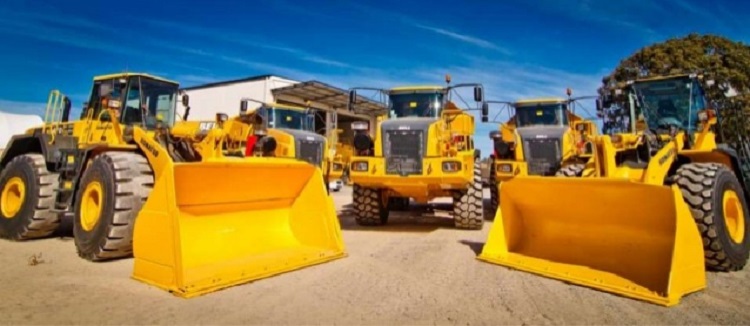The procedure below covers the Hazard Identification and Risk Assessment that involves on the project sites related with the operation and maintenance of heavy earth moving plant and machineries.
Earthmoving usually involves the operation of large, heavy and cumbersome vehicles in an environment easily affected by the weather.
Rainwater can soon change dry and dusty site conditions into treacherous wet and slippery roads where vehicles are prone to skidding.
Workers on ground are particularly vulnerable to being struck by the vehicles themselves or materials falling from them.
List of Risks involved with Earthmoving Machinery
- Vehicles colliding.
- Pedestrian being struck by vehicles.
- Pedestrians being struck by materials falling from vehicles.
- Contact with overhead power lines.
- Contact with underground services.
- Vehicles speeding.
- Vehicles overloaded.
- Operator control error.
- Vehicle control failure.
- Entanglement with moving parts.
- Unmanned vehicles moving.
- Vehicles overriding edge of tip/excavation.
- Struck by moving part.
Control Measures for Safe Operation of Earth Moving Machines
A safe system of work must be established by careful planning and organization of vehicular movements.
A one way system will usually help reduce the risk of vehicles colliding.
All equipment that carry appropriate certificate will receive a sticker.
Routes for pedestrian access and vehicular traffic as far as possible with the number of persons allowed on foot around earthmoving operations kept to an absolute minimum.
All persons should be issued with, and wear at all times reflective jackets or vests and shoes.
Danger areas must be clearly signposted and appropriate measures taken to protect workers needing to enter such areas.
Earthmoving Plant must be inspected and commissioned before commencing work on the project site.
To reduce the risk of materials falling from overloaded vehicles ensure tight control is exercised over the loading operation.
Ensure the machines access steps and handholds are maintained in good condition and no passengers are allowed unless a suitable seat is provided seatbelts to be worn at all times.
Where overhead power lines cross the site, protection must be introduced prior to any earthmoving operation. The control measures outlined in the section on “Overhead Services” must be applied.
Where underground services exist a “Excavation Permit” procedure should be adopted and the services should be located, marked and protected – refer to the control measures outlined in the section on “Underground Services”.
Realistic speed limits should be signposted and their adherence enforced, reduced speed limits may be necessary where vehicles approach public right of way, ramps, bridges and groups of workers on foot.
Cabs of machines should be kept clean and clear of loose items to reduce the risk of obstruction to the controls causing operator error.
All earthmoving machines should be properly maintained in accordance with the manufacturer recommendations. A planned maintenance program will help prevent the risk of vehicle control failure.
All machines must be adequately guarded to protect against entanglement with moving parts. Guards must only be removed for repair and maintenance purposes.
Unattended vehicles should only be left on firm level ground, in neutral gear, handbrake engaged with the engine switched off and the secured. Keys not left in ignition.
Where vehicles are used for tipping materials into an excavation, well-anchored stop blocks or other suitable measures should be used to prevent the vehicle overrunning the edge (a trained banks man may be necessary).
All rotating devices and parts to be guarded.
Wheel cages must be used when inflating Tyres and extension piece or pump not less than 1.5m.
Drivers must leave their cabs while they are being loaded unless cab protection is fitted.
Blades, buckets etc of machines must be lowered to the ground prior to the driver leaving the cab.
Raised parts of machinery, particularly hydraulic attachments and supports must be adequately propped or supported during maintenance and repair.
Vehicles should not be permitted to be driven when the tipping body is in the raised position.
Light Duty Vehicle (LDV) not be parked closer than 50m to any Plant Equipment.
Dry and dusty haul roads should be treated by spraying with a water based dust suppressant in order to reduce the risk of poor visibility and environmental dust pollution.
All machines must be equipped with a Fire Extinguisher.
Earthmoving Safety Checklist
Is the introduction of a one way system feasible?
Have pedestrians and vehicles been adequately segregated?
Have warning signs been erected in danger areas?
Are all personnel in possession of and wearing protective clothing/equipment?
Where overhead services are present, have protective measures been implemented.
Are speed limits being adhered to?
Are all machines adequately maintained and kept clean?
Have suitably trained banks men been appointed?
